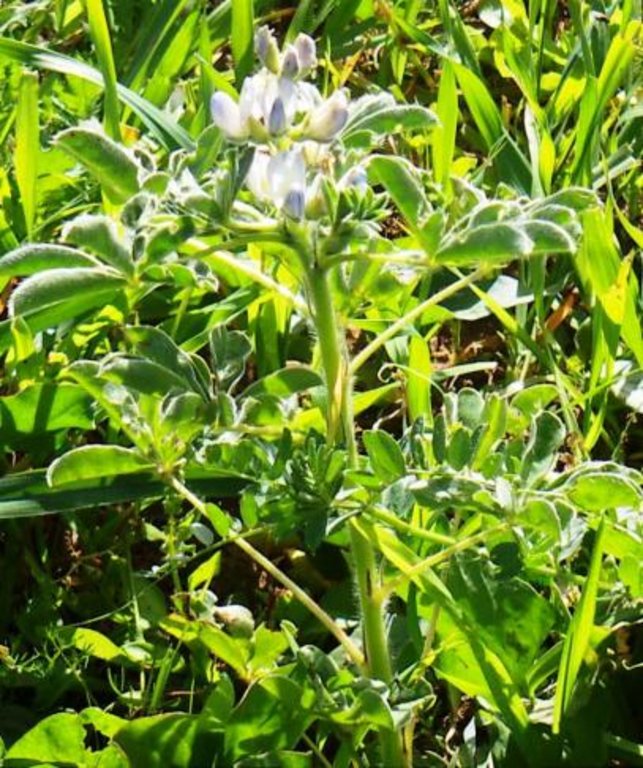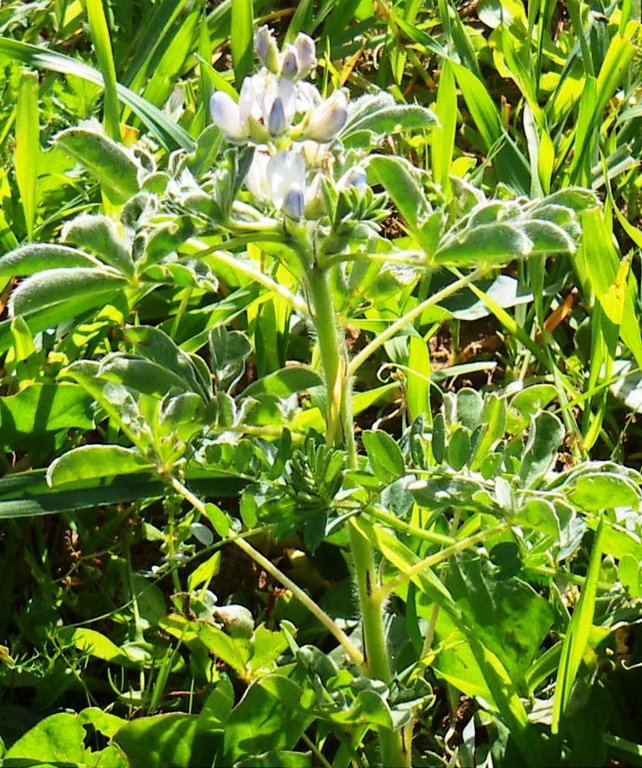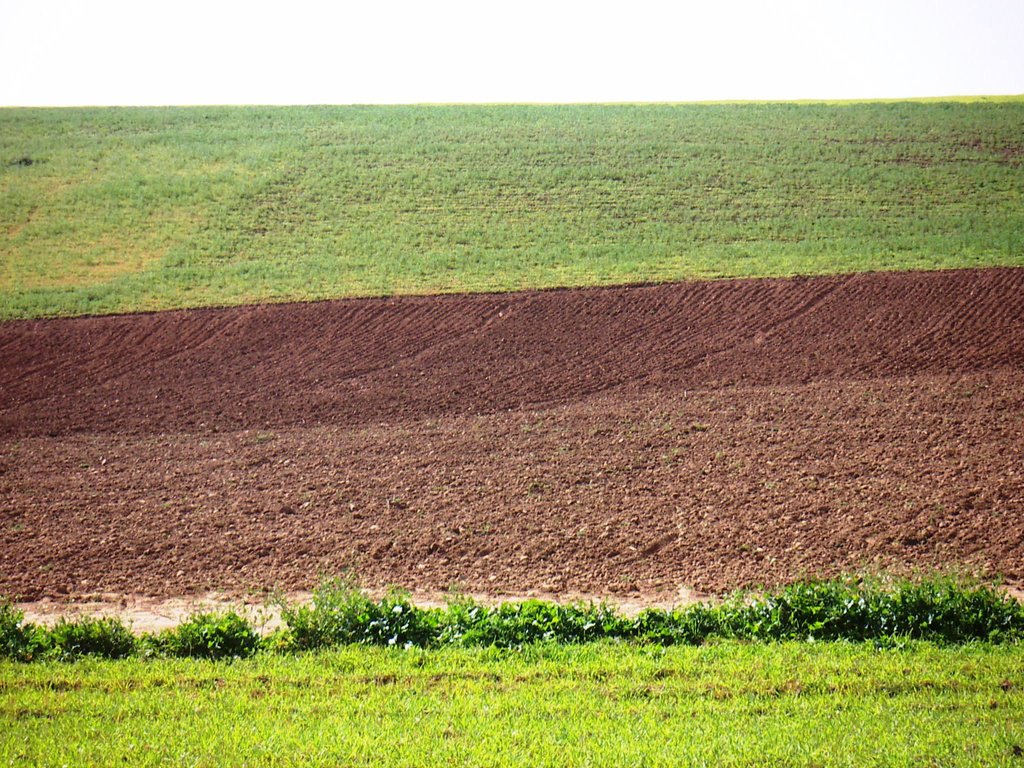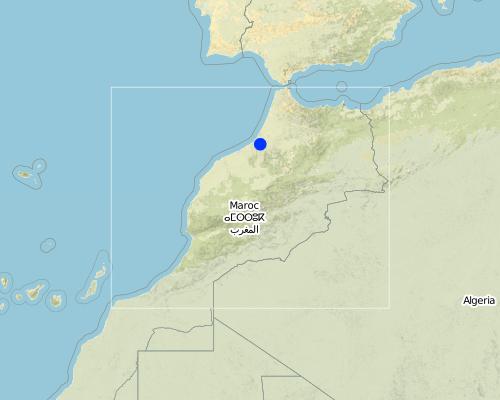Crop rotation: cereals / fodder legumes (lupin) [Morocco]
- Creation:
- Update:
- Compiler: Al Karkouri Jamal
- Editor: –
- Reviewer: Alexandra Gavilano
Bernicha
technologies_1031 - Morocco
View sections
Expand all Collapse all1. General information
1.2 Contact details of resource persons and institutions involved in the assessment and documentation of the Technology
Key resource person(s)
land user:
El Moudni Mohamed
Centre de Travaux agricoles
Sidi Bouknadel. Salé
Morocco
SLM specialist:
Machmachi Issam
Chaire Unesco Environnement.
Université Mohamed V. Faculté des Lettres et des Sciences humaines
Morocco
land user:
Benmbarek Abdelaziz
Exploitant. Douar Chiakh, Sidi Azouz, Commune des Shoul
Morocco
Name of project which facilitated the documentation/ evaluation of the Technology (if relevant)
DESIRE (EU-DES!RE)Name of the institution(s) which facilitated the documentation/ evaluation of the Technology (if relevant)
University Ibn Tofail (UIT) - Morocco1.3 Conditions regarding the use of data documented through WOCAT
When were the data compiled (in the field)?
21/03/2008
The compiler and key resource person(s) accept the conditions regarding the use of data documented through WOCAT:
Yes
2. Description of the SLM Technology
2.1 Short description of the Technology
Definition of the Technology:
Crops rotation: cereals / fodder legumes (lupin), with a biennial crop rotation
2.2 Detailed description of the Technology
Description:
Farming is the main activity of the Sehoul population. In the past, it was based on subsistence cultivation and especially on extensive breeding outside the farm. The cultivation practice mostly applied was barley monoculture. Nowadays, crop rotation is more and more diversified (use of other cereal species and mainly legumes). Because of land degradation on forest pasture, farmers increasingly use their farm land for fodder or legume production such as oats and lupin. White lupins were introduced in the region during the colonial era (1912-1956), through individual initiatives with no external support. The advantages of lupin cultivation are its ability to grow on poor and stony soils and, like other leguminous crops, it does not need nitrogen fertilizers because of its ability to fix nitrogen from the air, which reduces the costs. Additionally, lupin does not require much water (a minimum of 350 mm per year is sufficient). Considering the importance of pastoral activity in the production system of the Sehoul district, this technology meets the expectations of the population as follows. Firstly, there is improvement of fodder production. Lupin is a leguminous crop which can be eaten by ruminants either as green fodder or as grain. Secondly, there is soil improvement through a better structure, an increased soil organic matter content and better nitrogen retention that can be used for the next cultivation. Thirdly, there is a better soil cover because lupin is an invasive plant with efficient roots for finding nutrients, which allows its cultivation on poor soils.
The lupin cultivation technique consists of the following: spreading the seed in October-November, and possibly until mid-December. Early sowing shows good yields, because cold temperatures cause early blossoming. For white lupin, sowing density is about 100 kg/ha. Ploughing (20-25 cm deep ploughing is sufficient) to bury the seed is performed with a swing plough and two mules on slopes, and with a metallic plough or a tractor on plains. No weeding or fertilization activities are required because of the lupin's good nitrogen fixation capacity. However, an additional second or third ploughing can improve the harvest, but is often constrained by a lack of means. A first grazing is allowed in March but afterwards it is left so that it can recover again. Harvesting is done manually with sickles in August and residues are grazed again. Seed production is 8-10 quintals/ha, biomass is 3000 kg/ha.
This technology is applied on plateau margins with steep slopes, where traditional small-scale land use includes predominantly winter crop cultivations (wheat and barley) and secondary spring food cultivations (broad beans, chickpea, maize). On the plateau, bigger and better maintained farms perform irrigated cultivation with ground water. The cork oak forests are coveted as pasture land and firewood source and therefore they are regarded as important for their free natural fodder resources. Pasture land (except forests) covers a small area (12% of the Sehoul area) because of land appropriation and cultivation. Only the collective and the fallow lands are now used as pasture lands and generally show important and alarming degradation processes.
2.3 Photos of the Technology
2.5 Country/ region/ locations where the Technology has been applied and which are covered by this assessment
Country:
Morocco
Region/ State/ Province:
Salé
Further specification of location:
Sehoul
Map
×2.6 Date of implementation
If precise year is not known, indicate approximate date:
- 10-50 years ago
2.7 Introduction of the Technology
- introduced by colonists
Comments (type of project, etc.):
Lupin (like other fodder plants) was introduced by the French colonists (1912-1956) and the land users have continued to use it since, in rotation with other cultivations
3. Classification of the SLM Technology
3.2 Current land use type(s) where the Technology is applied

Cropland
- Annual cropping
Main crops (cash and food crops):
Blé tendre, légumineuses, fève, maïs, lupin Orge
Comments:
Major land use problems (compiler’s opinion): Decrease of productivity, continued exploitation on poor land leading to sealing and crusting, poor soils, cultivation with low ground cover, soil depletion, decrease of fertility and organic matter
Major land use problems (land users’ perception): Decrease of productivity, sealing and crusting
Future (final) land use (after implementation of SLM Technology): Cropland: Ca: Annual cropping
Livestock is grazing on crop residues
If land use has changed due to the implementation of the Technology, indicate land use before implementation of the Technology:
Grazing land: Ge: Extensive grazing land
3.3 Further information about land use
Comments:
Water supply: rainfed, mixed rainfed - irrigated
Specify:
Longest growing period in days: 300
Longest growing period from month to month: October to July
3.5 Spread of the Technology
Comments:
Total area covered by the SLM Technology is 2 m2.
The surface occupied by fodder legumes has declined
3.6 SLM measures comprising the Technology

agronomic measures
- A2: Organic matter/ soil fertility
Comments:
Main measures: agronomic measures
Type of agronomic measures: better crop cover, legume inter-planting, rotations / fallows, contour tillage
3.7 Main types of land degradation addressed by the Technology

chemical soil deterioration
- Cn: fertility decline and reduced organic matter content (not caused by erosion)

biological degradation
- Bq: quantity/ biomass decline
Comments:
Main type of degradation addressed: Bq: quantity / biomass decline
Secondary types of degradation addressed: Cn: fertility decline and reduced organic matter content
Main causes of degradation: deforestation / removal of natural vegetation (incl. forest fires) (Total clearing activities causes soil degradation problems), other natural causes (avalanches, volcanic eruptions, mud flows, highly susceptible natural resources, extreme topography, etc.) specify (soil fragility because of the very thin topsoil surface layer and the low organic matter content), poverty / wealth
Secondary causes of degradation: crop management (annual, perennial, tree/shrub) (Crop monoculture, which replaced the forest, cannot provide the necessary soil cover. The inadequate fertility management has also led to a decrease in the organic matter), overgrazing (After the reduction of pasture lands because of the cultivation area extension, the animal pressure has increased and pasture activities were reduced.), population pressure, education, access to knowledge and support services
3.8 Prevention, reduction, or restoration of land degradation
Specify the goal of the Technology with regard to land degradation:
- prevent land degradation
Comments:
Main goals: prevention of land degradation
4. Technical specifications, implementation activities, inputs, and costs
4.1 Technical drawing of the Technology
4.2 Technical specifications/ explanations of technical drawing
The lupin plot occupies the upper part of the watershed, characterized by very fragile soils because of their thinness (20-40cm) and low organic matter content.
Location: High watershed of Ain Bendar. Salé
Date: 2008/03/15
Technical knowledge required for field staff / advisors: low
Technical knowledge required for land users: moderate
Main technical functions: improvement of ground cover, increase of biomass (quantity)
Secondary technical functions: increase in organic matter, increase in nutrient availability (supply, recycling,…), increase of infiltration, promotion of vegetation species and varieties (quality, eg palatable fodder)
Better crop cover
Material/ species: Lupin (leguminous plant)
Quantity/ density: 23p/m2
Remarks: March
Rotations / fallows
Material/ species: legumes / crops
Quantity/ density: 1/2
Remarks: legumes are cultivated in rotation with the crops in alternate years
Contour tillage
Material/ species: swing plow or plough and mules
Quantity/ density: 1
Remarks: 2 mules
4.3 General information regarding the calculation of inputs and costs
other/ national currency (specify):
Dirham
Indicate exchange rate from USD to local currency (if relevant): 1 USD =:
8.0
Indicate average wage cost of hired labour per day:
5.00
4.4 Establishment activities
| Activity | Type of measure | Timing | |
|---|---|---|---|
| 1. | plough | Structural | |
| 2. | equid | Structural | |
| 3. | swing-plough | Structural |
4.5 Costs and inputs needed for establishment
| Specify input | Unit | Quantity | Costs per Unit | Total costs per input | % of costs borne by land users | |
|---|---|---|---|---|---|---|
| Labour | hectare | 100.0 | ||||
| Labour | ploughing | hectare | 1.0 | 62.0 | 62.0 | 100.0 |
| Equipment | reaping hook | 3.0 | 72.0 | 216.0 | 100.0 | |
| Equipment | 4.0 | |||||
| Construction material | cart | hectare | 1.0 | 203.0 | 203.0 | 100.0 |
| Other | animal traction | hectare | 1.0 | 5406.0 | 5406.0 | |
| Other | c | |||||
| Total costs for establishment of the Technology | 5887.0 | |||||
Comments:
Duration of establishment phase: 12 month(s)
4.6 Maintenance/ recurrent activities
| Activity | Type of measure | Timing/ frequency | |
|---|---|---|---|
| 1. | Seeds | Agronomic | during the first rains in Autumn |
| 2. | Ploughing | Agronomic | after seeding |
| 3. | Harvest | Agronomic | end of June |
| 4. | Gathering and canning | Agronomic | end of the harvest |
4.7 Costs and inputs needed for maintenance/ recurrent activities (per year)
| Specify input | Unit | Quantity | Costs per Unit | Total costs per input | % of costs borne by land users | |
|---|---|---|---|---|---|---|
| Plant material | seeds | 4.2 | 420.0 | 1764.0 | 100.0 | |
| Total costs for maintenance of the Technology | 1764.0 | |||||
Comments:
Machinery/ tools: ploughing on slopes = wooden swing plough; ploughing in the plains = mettalig plough; important areas = tractor
Equipment and seed costs concern the hectare of cultivated land. The labour costs for a working day are 5 US$ per person.
4.8 Most important factors affecting the costs
Describe the most determinate factors affecting the costs:
les équipements et les semences
5. Natural and human environment
5.1 Climate
Annual rainfall
- < 250 mm
- 251-500 mm
- 501-750 mm
- 751-1,000 mm
- 1,001-1,500 mm
- 1,501-2,000 mm
- 2,001-3,000 mm
- 3,001-4,000 mm
- > 4,000 mm
Agro-climatic zone
- sub-humid
- semi-arid
Thermal climate class: subtropics. The mean monthly temperature is between 11° (coldest month) and 23° (hottest month)
5.2 Topography
Slopes on average:
- flat (0-2%)
- gentle (3-5%)
- moderate (6-10%)
- rolling (11-15%)
- hilly (16-30%)
- steep (31-60%)
- very steep (>60%)
Landforms:
- plateau/plains
- ridges
- mountain slopes
- hill slopes
- footslopes
- valley floors
Altitudinal zone:
- 0-100 m a.s.l.
- 101-500 m a.s.l.
- 501-1,000 m a.s.l.
- 1,001-1,500 m a.s.l.
- 1,501-2,000 m a.s.l.
- 2,001-2,500 m a.s.l.
- 2,501-3,000 m a.s.l.
- 3,001-4,000 m a.s.l.
- > 4,000 m a.s.l.
Comments and further specifications on topography:
Cette tranche d’altitude coïncide avec le fond des vallées de l’oued Bouregreg et de l’oued Grou (10% de la superficie totale) . Cette tranche concerne le reste du plateau de Shoul. Cette tranche d’altitude coïncide avec le fond des vallées de l’oued Bouregreg et de l’oued Grou (10% de la superficie totale) . Cette tranche concerne le reste du plateau de Shoul. les versants bordiers de Bouregreg et du grou sont disséqués en pysage valloné . Sehoul présente aussi de larges fonds de vallées
5.3 Soils
Soil depth on average:
- very shallow (0-20 cm)
- shallow (21-50 cm)
- moderately deep (51-80 cm)
- deep (81-120 cm)
- very deep (> 120 cm)
Soil texture (topsoil):
- coarse/ light (sandy)
- medium (loamy, silty)
Soil texture (> 20 cm below surface):
- coarse/ light (sandy)
- medium (loamy, silty)
Topsoil organic matter:
- medium (1-3%)
- low (<1%)
5.4 Water availability and quality
Water quality (untreated):
good drinking water
5.5 Biodiversity
Species diversity:
- low
Comments and further specifications on biodiversity:
la biodiversité a régréssé à cause du défrichment. à l'intérieur de la forêt le ciste est dominant.
5.6 Characteristics of land users applying the Technology
Market orientation of production system:
- subsistence (self-supply)
- mixed (subsistence/ commercial
Off-farm income:
- less than 10% of all income
Relative level of wealth:
- very poor
- poor
Individuals or groups:
- individual/ household
Gender:
- men
Indicate other relevant characteristics of the land users:
Land users applying the Technology are mainly common / average land users
Difference in the involvement of women and men: tradition make that women are responsible for the household and men for the works on the fields
Population density: 10-50 persons/km2
Annual population growth: 0.5% - 1%
12% of the land users are very rich and own 1% of the land.
19% of the land users are rich and own 5% of the land.
25% of the land users are average wealthy and own 12% of the land.
24% of the land users are poor and own 22% of the land.
20% of the land users are poor and own 60% of the land.
Off-farm income specification: There is no major differences
5.7 Average area of land owned or leased by land users applying the Technology
- < 0.5 ha
- 0.5-1 ha
- 1-2 ha
- 2-5 ha
- 5-15 ha
- 15-50 ha
- 50-100 ha
- 100-500 ha
- 500-1,000 ha
- 1,000-10,000 ha
- > 10,000 ha
Is this considered small-, medium- or large-scale (referring to local context)?
- small-scale
Comments:
Average area of land owned or leased by land users applying the Technology: 2-5 ha, 5-15 ha, 15-50 ha, 50-100 ha, 100-500 ha
5.8 Land ownership, land use rights, and water use rights
Land ownership:
- individual, titled
- in associations
Land use rights:
- open access (unorganized)
Water use rights:
- open access (unorganized)
Comments:
Mainly melk (private property, 52%) and associations (13%)
5.9 Access to services and infrastructure
health:
- poor
- moderate
- good
education:
- poor
- moderate
- good
technical assistance:
- poor
- moderate
- good
employment (e.g. off-farm):
- poor
- moderate
- good
markets:
- poor
- moderate
- good
energy:
- poor
- moderate
- good
roads and transport:
- poor
- moderate
- good
drinking water and sanitation:
- poor
- moderate
- good
financial services:
- poor
- moderate
- good
6. Impacts and concluding statements
6.1 On-site impacts the Technology has shown
Socio-economic impacts
Production
crop production
Quantity before SLM:
10 qt/ha
Quantity after SLM:
18 qt/ha
product diversity
Quantity before SLM:
2 cultivations
Quantity after SLM:
8 cultivations
Income and costs
farm income
Socio-cultural impacts
cultural opportunities
Quantity before SLM:
2culture
Quantity after SLM:
8culture
Ecological impacts
Soil
soil moisture
Quantity before SLM:
4.99%
Quantity after SLM:
10.31%
soil loss
Quantity before SLM:
2 g/h/m²
Quantity after SLM:
0.5 g/h/m²
nutrient cycling/ recharge
Quantity before SLM:
0
Quantity after SLM:
50 kg/ha
soil organic matter/ below ground C
Quantity before SLM:
0.88%
Quantity after SLM:
2.21%
Biodiversity: vegetation, animals
plant diversity
Quantity before SLM:
2 species
Quantity after SLM:
8 species
6.2 Off-site impacts the Technology has shown
downstream siltation
6.3 Exposure and sensitivity of the Technology to gradual climate change and climate-related extremes/ disasters (as perceived by land users)
Gradual climate change
Gradual climate change
| Season | Type of climatic change/ extreme | How does the Technology cope with it? | |
|---|---|---|---|
| annual temperature | increase | well |
Climate-related extremes (disasters)
Meteorological disasters
| How does the Technology cope with it? | |
|---|---|
| local rainstorm | not well |
| local windstorm | not well |
Climatological disasters
| How does the Technology cope with it? | |
|---|---|
| drought | not well |
Hydrological disasters
| How does the Technology cope with it? | |
|---|---|
| general (river) flood | not well |
Other climate-related consequences
Other climate-related consequences
| How does the Technology cope with it? | |
|---|---|
| reduced growing period | not known |
6.4 Cost-benefit analysis
How do the benefits compare with the establishment costs (from land users’ perspective)?
Short-term returns:
negative
Long-term returns:
positive
How do the benefits compare with the maintenance/ recurrent costs (from land users' perspective)?
Short-term returns:
neutral/ balanced
Long-term returns:
slightly positive
Comments:
Rotation benefits can only appear in the long-term, after the amortization of implementation expenses.
6.5 Adoption of the Technology
Of all those who have adopted the Technology, how many have did so spontaneously, i.e. without receiving any material incentives/ payments?
- 90-100%
Comments:
100% of land user families have adopted the Technology without any external material support
40 land user families have adopted the Technology without any external material support
There is no trend towards spontaneous adoption of the Technology
Comments on adoption trend: This technology is in decline because of the use of fertilizers which allow a crop/crop rotation and because of the increased seeds prices. As for food leguminous plants, this cultivation requires the mobilization of the family labour, nowadays not available taking into account the factor of emigration.
6.7 Strengths/ advantages/ opportunities of the Technology
| Strengths/ advantages/ opportunities in the land user’s view |
|---|
|
Better soil fertility management How can they be sustained / enhanced? Make demonstrations for the benefit of the population |
| Strengths/ advantages/ opportunities in the compiler’s or other key resource person’s view |
|---|
|
Maintenance of the soil fertility How can they be sustained / enhanced? Encourage the crop rotation by subsidy of the administration |
|
Low-cost technology How can they be sustained / enhanced? Make demonstrations for the benefit of the population |
|
Technology not very demanding in SWC knowledge How can they be sustained / enhanced? Technical support to use the technology better |
6.8 Weaknesses/ disadvantages/ risks of the Technology and ways of overcoming them
| Weaknesses/ disadvantages/ risks in the land user’s view | How can they be overcome? |
|---|---|
| Reduce the use of crop rotation and move the animals away from the exploited land occupied by cultivations throughout the year. | Replace legumes by fodder crop on the open-field |
| Weaknesses/ disadvantages/ risks in the compiler’s or other key resource person’s view | How can they be overcome? |
|---|---|
| Erosion risks for the spring cultivations (maize), because the soil is bare during a high rainfall period. | Introduce a catch crop cultivation before the legumes or maize cultivation in order to cover the soil during the heavy rains. Mulching can also be done. |
| Very demanding in family and animals workforce | Mechanization |
7. References and links
7.2 References to available publications
Title, author, year, ISBN:
Antari M. (2007) : Mesure de l’érosion et du ruissemellent dans le micro-bassin versant Matlaq et essai de modélisation (Région de Rabat, Maroc). Thèse de Doctorat, Université Mohammed V-Agdal, Faculté des Lettres et Science Humaines, Rabat. 218p.
Available from where? Costs?
Bibliothèque de la Faculté des Lettres et Science Humaines, Rabat, Maroc
Title, author, year, ISBN:
Nafaa R. (1997) : Dynamique du milieu naturel de la Mamora : paléoenvironnements et évolution actuelle de la surface. Thèse d’Etat en géographie physique, FLSH Rabat, 275p
Available from where? Costs?
Bibliothèque de la Faculté des Lettres et Science Humaines, Rabat, Maroc
Title, author, year, ISBN:
Ghanem H. (1981) : Contribution à la connaissance des sols du Maroc. Genèse et répartition des sols des régions des Zaers, de la basse Chaouia et des Shouls (Méséta marocaine). Cahiers de la Recherche Agronomique n°37&38, INRA, Rabat.
Available from where? Costs?
Bibliothèque de la Faculté des Lettres et Science Humaines, Rabat, Maroc
Title, author, year, ISBN:
DPA (2001) : Projet de mise en valeur bour des Shouls. Direction Provinciale de l’Agriculture, Rabat.
Available from where? Costs?
Direction Provinciale de l’Agriculture, Rabat.
Title, author, year, ISBN:
DPA (2002): Étude de l’analyse des sols dans le périmètre de mise en valeur en bour des Shouls. Evaluation de la fertilité des sols et fertilisation des cultures. Marché négocié 01-2002-DPA-36.
Available from where? Costs?
Direction Provinciale de l’Agriculture, Rabat.
Links and modules
Expand all Collapse allLinks
No links
Modules
No modules







